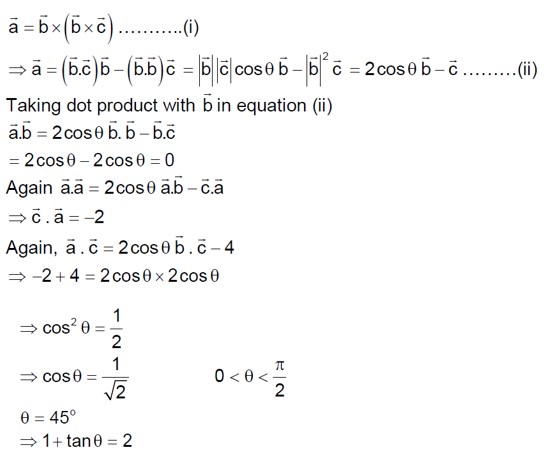Ncert Solutions Maths class 11th
Get insights from 1.6k questions on Ncert Solutions Maths class 11th, answered by students, alumni, and experts. You may also ask and answer any question you like about Ncert Solutions Maths class 11th
Follow Ask QuestionQuestions
Discussions
Active Users
Followers
New answer posted
2 months agoContributor-Level 10
. xdy - ydx - x² (xdy + ydx) + 3x? dx = 0
⇒ (xdy - ydx)/x² - (xdy + ydx) + 3x²dx = 0 ⇒ d (y/x) - d (xy) + d (x³) = 0
Integrate both side, we get
y/x - xy + x³ = c
Put x = 3, y = 3
⇒ 1 - 9 + 27 = c
c = 19
Put x = 4
y/4 - 4y = 19 - 64
⇒ y = 12
New answer posted
2 months agoContributor-Level 10
for reflexive (x, x)
x³ - 3x²x + 3x³ = 0
. reflexive
For symmetric
(x, y) ∈ R
x³ - 3x²y - xy² + 3y³ = 0
⇒ (x - 3y) (x² - y²) = 0
For (y, x)
(y - 3x) (y² - x²) = 0
⇒ (3x - y) (x² - y²) = 0
Not symmetric
New answer posted
2 months agoContributor-Level 10
Let the equation of circle be
x (x-1/2) + y² + λy = 0
=> x² + y² - x/2 + λy = 0
Radius = √ (1/16 + λ²/4) = 2
=> λ² = 63/4 => (x-1/4)² + (y+λ/2)² = 4
∴ This circle and parabola
y-α = (x-1/4)² touch each other, so
α = -λ/2 + 2 => α-2 = -λ/2 => (α-2)² = λ²/4 = 63/16
(4α–8)² = 63
New answer posted
2 months agoContributor-Level 10
As slope of line joining (1, 2) and (3, 6) is 2 given diameter is parallel to side
∴ a = √ (3-1)²+ (6-2)² = √20 and
b/ (a/2) = 4/a => b = 8/√5
Area
ab = 2√5 * 8/√5 = 16
New answer posted
2 months agoContributor-Level 10
T? = r/ (2r²)²+1)
= r/ (2r²+1)²- (2r)²)
= (1/4) * (4r)/ (2r²+2r+1) (2r²-2r+1)
S? = 1/4 Σ? ¹? [ 1/ (2r²-2r+1) - 1/ (2r²+2r+1) ]
=> S? = (1/4) * (220/221) = 55/221 = m/n
∴ m+n = 276
New answer posted
2 months agoContributor-Level 10
First we arrange 5 red cubes in a row and assume x? , x? , x? , x? , x? and x? number of blue cubes between them
Here, x? + x? + x? + x? + x? + x? = 11
and x? , x? , x? , x? ≥ 2
so x? + x? + x? + x? + x? + x? = 3
No. of solutions =? C? = 56
New answer posted
2 months agoContributor-Level 10
Let e? = t then equation reduces to
t³ – 11t – 45/t + 81/t² = 0
=> 2t? – 22t³ + 81t – 45 = 0 . (i)
If roots of
e³? – 11e²? – 45e? + 81/2 = 0
=> α? + α? + α? = ln45 => p = 45
New answer posted
2 months agoContributor-Level 10
| p | q | p^q | ¬ (p^q) | (¬ (p^q)vq | pvq | p? q | p? (pvq) |
|-|-|-|-|-|-|-|-|
| T | T | T | F | T | T | T | T |
| T | F | F | T | T | T | F | T |
| F | T | F | T | T | T | T | T |
| F | F | F | T | T | F | T | T |
Tautology, Tautology
New answer posted
2 months agoContributor-Level 10
x²/a² + y²/b² = 1
(-4/√5)²)/a² + (2/√5)²)/b² = 1
=> 32/a² + 9/b² = 1
=> 32/ (5a²) + 9/b² = 1 . (i)
From (i)
6/b² + 9/b² = 1 => b²=15 & a²=16
a²+b² = 15+16=31
Taking an Exam? Selecting a College?
Get authentic answers from experts, students and alumni that you won't find anywhere else
Sign Up on ShikshaOn Shiksha, get access to
- 65k Colleges
- 1.2k Exams
- 679k Reviews
- 1800k Answers

